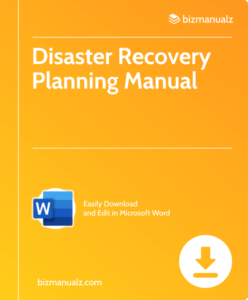What Is Underwriting Risk In Insurance and Securities?

Underwriting risk is a major factor in the insurance and securities industries. It is the possible financial loss that an insurer or underwriter may face when issuing policies or securities. It’s essential for both insurers and investors to comprehend this risk as it affects their decision-making. What is underwriting risk in insurance and securities?
What Is Underwriting Risk?
For insurance, underwriting risk encompasses evaluating the probability of a claim happening and its potential magnitude. Insurers analyze different elements such as the applicant’s health, job, and lifestyle before determining the premium. The aim is to balance attracting customers with gaining profit, which is just good financial risk management for a business.
When it comes to securities, underwriting risk is about assessing if investing in a particular security is financially practical. Underwriters look at various factors like market conditions, company performance, and regulatory elements before pricing and issuing securities. Their purpose is to make sure both issuers and investors benefit from these financial instruments.
While underwriting risk assessment depends largely on statistical models and past data, knowledge and judgment are also needed. It involves carefully evaluating risks associated with various policyholders or investments to minimize losses. Risk management practices are essential in the ever-changing economic environment.
To reduce underwriting risk, insurers use reinsurance arrangements where they transfer some of their risks to other organizations. This spreads out the potential losses across several entities. Likewise, investment banks employ syndications or consortiums to share underwriting risks when handling large-scale offerings.
Understanding Underwriting Risk
Underwriting risk is the potential financial loss that an insurance company or securities firm may face because of inaccurate assessment of risks related to a policy or investment. This happens when the premiums they collect don’t cover the costs of the claims or losses. Let’s look into it further through a table.
| Key Factors | Description |
|---|---|
| Risk Assessment | Evaluating the likelihood and potential magnitude of risks |
| Premium Calculation | Determining the amount to be charged as premiums based on risk analysis |
| Underwriting Guidelines | Establishing criteria for accepting or rejecting policies or investments |
| Loss Ratio Analysis | Assessing the ratio of claims paid to premiums collected |
| Reinsurance Arrangements | Transferring part of the risk to other insurers |
Underwriters also think about other aspects like market conditions, industry trends, and regulatory requirements when assessing underwriting risk. Insurance companies and securities firms must manage this risk properly to stay financially healthy and protect their stakeholders.
Interestingly, a report by Mckinsey & Company says that underwriting risk is one of the biggest challenges insurers and securities providers face in today’s unpredictable market.
Factors Contributing to Underwriting Risk
Underwriting risk is about the potential money loss that insurance companies and securities firms may have to bear when they insure people or invest in stock. This risk is impacted by several aspects, which are detailed below.
Factors That Affect Underwriting Risk:
Let’s investigate the table below for further information:
| Factor | Description |
|---|---|
| Industry Competition | Great rivalry in the insurance and securities industries |
| Economic Conditions | Variations in economic conditions influencing investment returns |
| Claims Experience | Historical data on claims made by policyholders |
| Underwriting Policy | The instructions and regulations followed during the underwriting |
| Legal and Regulatory | Adhering to legal and regulatory requirements |
Every one of these factors is vital in assessing the level of underwriting risk faced by insurance companies and securities firms. Apart from these points, other unique details that add to underwriting risk include changes in law or regulations, technology progress influencing data safety, and external events such as natural disasters.
Pro Tip: To control underwriting risk, it is important for insurance companies and securities firms to assess their underwriting policies regularly, stay informed with industry trends, and maintain a varied portfolio of investments.
Techniques for Managing Underwriting Risk
Managing underwriting risk in insurance and securities needs strategies to stop potential financial losses. This management is essential for the stability and profitability of insurance companies and investment firms.
To manage underwriting risk, professionals use methods like:
- Risk assessment – Thorough evaluations to spot possible outcomes which could damage profitability and solvency.
- Diversification – Spreading risks across different industries, markets, or areas. This reduces the exposure to one risk factor and helps balance performance.
- Reinsurance – Transferring a part of responsibility for potential losses to another insurer or reinsurer with contractual agreements. This lightens the financial burden on the primary insurer, while coverage to policyholders is still given.
- Underwriting guidelines – Implementing rigorous policies and standards for evaluating potential insured individuals or entities. These help make sure only acceptable risks are taken on, reducing the possibility of large claims.
- Statistical modeling – Utilizing advanced statistical models and algorithms to forecast potential losses accurately. This lets insurers estimate expected claims costs more precisely, aiding in setting appropriate premium rates and reserves.
These techniques work together to make a comprehensive risk management framework tailored to each insurer’s individual needs.
Specific aspects of managing underwriting risk include using data analytics tools to find emerging trends and patterns that could affect future claim experience. Also, investment diversification beyond traditional asset classes into alternative investments such as real estate or private equity can offer more protection from underwriting losses.
A good example of effective management of underwriting risk is the case of Lloyd’s of London. This is one of the oldest insurance marketplaces globally. Lloyd’s has implemented strict underwriting guidelines and risk assessment practices, making sure its success continues, despite facing critical catastrophes like natural disasters and financial crises.
Impact of Underwriting Risk on Insurance and Securities Industry
Underwriting risk has a major effect on the insurance and securities industry. From financial stability to customer trust and investor confidence, this risk affects various elements. To understand it better, let’s take a look at a table showing the impacts of underwriting risk on the industry.
| Impact | Description |
|---|---|
| Financial Losses | Claims exceeding premiums can cause big financial losses. |
| Uncertain Market Conditions | Risk may lead to increased volatility in market conditions. |
| Reputation Damage | Poor practices can hurt the reputation of insurers. |
| Regulatory Challenges | Companies must meet regulations, resulting in extra costs. |
To reduce underwriting risk:
- Implement risk management frameworks. Assessments help create strategies to minimize exposure.
- Establish strong internal controls. Audits detect weaknesses that increase risk levels.
- Diversify investment portfolios. This reduces concentration risks.
- Offer continuous training programs. Keep personnel updated on emerging risks, regulations, and best practices.
By following these steps, the industry can address underwriting risk. This proactive approach increases financial stability, customer trust, and investor confidence.
Case Studies: Notable Examples of Underwriting Risk
Underwriting risk in insurance and securities is a big worry for both insurers and investors. Let’s look at some examples of underwriting risk. We’ll put the data in a table.
| Company | Underwriting Risk |
|---|---|
| Company X | They miscalculated the losses from a natural disaster. So, they had to pay out a lot and had financial problems. |
| Company Y | They took too much risk. They gave policies to high-risk people without enough premium. This led to more claims than expected. This caused bad money problems. |
| Company Z | They made their underwriting decisions based on wrong market projections. They lost a lot when their investments didn’t go as planned. |
Tip: To reduce underwriting risk, insurers and investors must research and analyze, accurately work out risks and keep reviewing their underwriting strategies.
Regulatory Framework and Standards for Underwriting Risk
The insurance and securities industry requires a regulatory framework and standards for underwriting risk. Adhering to these regulations is key to preserve market stability and integrity.
The Insurance Regulatory Authority supervises insurance underwriting to guarantee solvency and consumer protection. Relevant standards include Solvency II, NAIC Model Laws, and Risk-Based Capital (RBC) Frameworks.
The Securities and Exchange Commission (SEC) oversees underwriting in securities markets. This ensures fair offerings for investors. Key standards include SEC Rule 415 (shelf registrations), Regulation M, and Rule 144A (private placements).
Lastly, the Financial Industry Regulatory Authority (FINRA) safeguards investors’ interests by maintaining fair practices in securities underwriting. FINRA also takes disciplinary actions against firms involved in fraudulent activities.
Underwriting Risk In Insurance and Securities
Underwriting risk in insurance and securities is important. Evaluating risks and their impacts affects success or failure. Data analysis helps manage this risk. Advanced analytics and predictive modeling give insurers valuable insights. Risk management strategies are a must. Diversifying, pricing, and policies help mitigate risks.
Here’s a story that shows this: In the early 2000s, an insurance company offered coverage in wildfire-prone areas. They had attractive rates, but lacked evaluation. When wildfires hit, they had devastating losses. This highlights the need for proper underwriting risk assessment for sustainability.
Frequently Asked Questions
 Q: What is underwriting risk in insurance and securities?
Q: What is underwriting risk in insurance and securities?
A: Underwriting risk refers to the potential financial loss that an insurance company or securities firm may face when determining the eligibility of an applicant for insurance coverage or investment options. It involves assessing the risk factors associated with an individual or organization and deciding whether to provide coverage or invest funds.
Q: How is underwriting risk measured?
A: Underwriting risk is typically measured through various factors such as the applicant’s age, health condition, creditworthiness, past insurance or investment history, and the type of coverage or securities being underwritten. These factors help determine the likelihood of a claim or investment loss.
Q: What are the consequences of underwriting risk for insurance companies and securities firms?
A: The consequences of underwriting risk can include financial losses for insurance companies and securities firms if they underestimate the level of risk associated with a particular applicant or investment. This can result in paying out more claims than expected or experiencing a decline in the value of securities.
Q: How do insurance companies manage underwriting risk?
A: Insurance companies manage underwriting risk by carefully assessing and pricing policies based on the potential risk involved. They use actuarial data, statistical models, and underwriting guidelines to evaluate risks accurately. Additionally, they may set specific limits, deductibles, and premiums based on their risk assessment.
Q: Can underwriting risk be transferred to reinsurers or other parties?
A: Yes, insurance companies can transfer underwriting risk to reinsurers. Reinsurance is a practice where a company purchases insurance from another company to mitigate its risk exposure. By doing so, the primary insurer transfers a portion of their underwriting risk to the reinsurer.
Q: Are there regulations in place to manage underwriting risk in the insurance and securities industry?
A: Yes, there are regulations and guidelines in place to manage underwriting risk. Regulatory bodies, such as insurance commissions and securities regulators, oversee the insurance and securities industry to ensure that companies follow proper underwriting practices and maintain financial stability.
















Leave a Reply